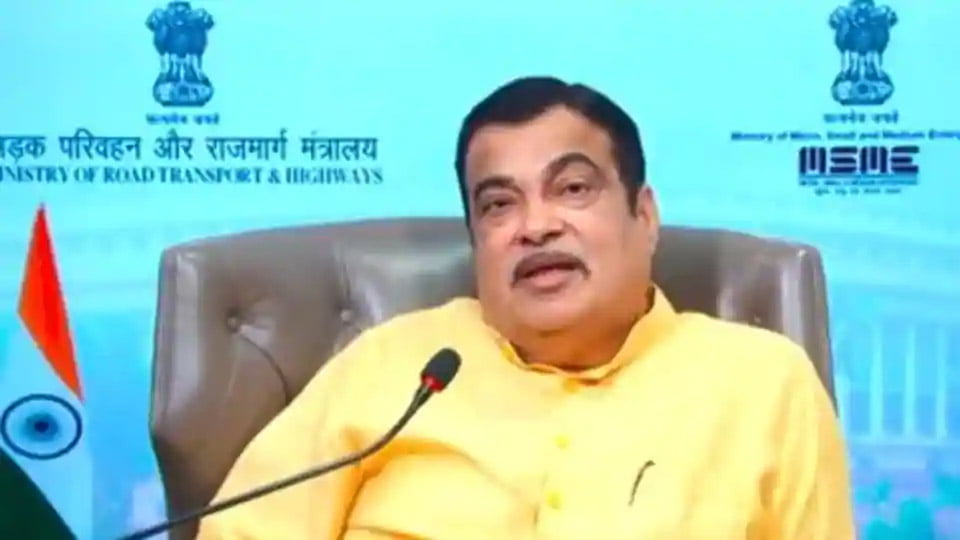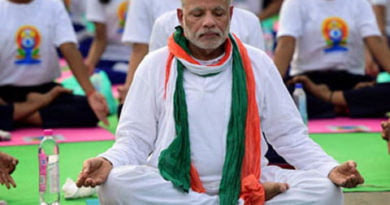‘Toll naka mukt Bharat’ in next two years; Govt gives nod to GPS tech based toll collection: Nitin Gadkari

• NHAI toll income may rise up to Rs 1.34 lakh crore in 5 yrs using GPS technology
• Govt to come up with plan to install GPS in old vehicles
New Delhi, 17th December 2020: India will become ‘toll naka mukt’ in next two years as Government has finalised Global Positioning System (GPS) technology based toll collection to ensure seamless movement of vehicles across the country, Union Minister of Road Transport & Highways (MoRTH) and Micro, Small & Medium Enterprises (MSMEs), Mr Nitin Gadkari said at an ASSOCHAM Foundation Week Programme today.
“With the help of Russian Government we have accepted the GPS system and in next two years we will have toll collection system running on GPS technology,” said Mr Gadkari while sharing his perspective on the theme ‘National Infrastructure Pipeline critical for economic revival across sectors,’ at the virtual event organised by ASSOCHAM.
He explained, “The toll amount will be deducted directly from the bank account based on the movement of vehicles. While now all commercial vehicles are coming with vehicle tracking systems, the Government will come up with some plan to install GPS technology in old vehicles.”
The Minister while virtually addressing ASSOCHAM Foundation Week 2020: “India’s resilience: Aatmanirbhar roadmap towards a US$5 trillion economy,” said that this is the first time he is making a public announcement in this regard.
Stating that he expects the toll collections to reach Rs 34,000 crore in this year by end of March, Mr Gadkari informed, “Yesterday there was a presentation in presence of secretary, MoRTH and chairman, NHAI (National Highways Authority of India), by using GPS technology for toll collection we are expecting that our toll income in next five years will be Rs 1,34,000 crore.”
Mr Gadkari also informed that on coming Monday the MoRTH will hold a meeting as it is planning to make a ‘hill city’ in 19 km stretch between Zojila tunnel and Z-Morh tunnel under Kargil with the cooperation of Governments of Union Territories of Leh-Ladakh and Jammu & Kashmir.
“For this I am taking help from Hafeez Contractor who has collaborated with a Swiss architect as we need to generate new ideas for the hill station, we want to develop different types of rides on the snow, construct resorts, hotels, restaurants, convention centres. It will boost tourism in the region and attract people both from within India and abroad,” he said.
He added about being confident that this project would be profitable as it would lead to growth in traffic for the tunnel and toll collection would grow. He said both Leh-Ladakh and Jammu & Kashmir governments will be partners and stakeholders and his ministry will take land from them for this project.
Mr Gadkari said that he will soon meet Governors from both UTs. “Their land will be equity, one Rs lease rate will be there and they will give land as equity. I will develop infrastructure, road, transport, water, communication and we will sell the plots by making plans of hotels, restaurants, resorts, convention centres, residential accommodation by which we can get good profit and by the way of Public private investment we plan to make it a success story of the hill station.”
He also expressed gratitude towards ASSOCHAM leadership for helping MoRTH in constructing Zojila tunnel. “In the government, I received the file at a time when cost had increased up to Rs 11,000 crore. At that time I refused to sign and we decided to reduce the cost. I would like to thank ASSOCHAM for their help in saving country’s Rs 5,000 crore.”
Speaking on the theme of the session, he said that industrial development is key to employment generation and poverty eradication in India, however at the present time, industry is India is centralised in urban areas as such decentralisation of industry is imperative to boost growth rate as growing urbanisation is causing grave problems in cities like Delhi, Mumbai, Chennai, Kolkata and others.
“We need to plan a strategy as to how we can promote industries in urban, rural, tribal areas and 115 aspirational districts, their contribution in our growth is negligible. So, not only smart cities, we need to develop the idea of smart villages, organic agriculture to promote agriculture exports,” said the Minister.
He also impressed upon the need to promote public-private investment in infrastructure development. He assured Government’s support in projects that are not economically viable.
Talking about his achievements as Ports & Shipping and Inland Waterways Minister, he stated “Using public-private mode of investment, we planned worth Rs 16 lakh crore Sagarmala Project and we had completed project works worth Rs six lakh crore during my regime, and our profit in ports was Rs 7,000 crore per year during that time.”
He also said that power sector in India needs reforms as without that discoms’ position will not be good and government is already working on this to protect this sector.
Mr Gadkari lamented that steel companies have increased prices by 55 per cent in six months. “I have written a letter to the PM that we need sit and take a decision at the highest level as reducing productivity and hiking the costs is not a good strategy. Same is with cement sector and such policies are not going to be viable for a long term. We need to come up with a long-term policy in this regard for cement and steel manufacturers. There is a need for uniformity in the policy.”
Sharing his perspective, Dr Niranjan Hiranandani, president, ASSOCHAM said, “The National Infrastructure Pipeline (NIP) for FY 2019-25 is a first-of-its-kind, government exercise to provide world-class infrastructure to citizens and improving their quality of life. It also aims to attract investments into infrastructure.”
The ASSOCHAM chief added, “The Development of proper infrastructure will have a cascading effect on other sectors and also act as a form of fiscal stimulus having a multiplier effect on overall economic growth, which is thought to be a more effective form of spending.”
Dr Hiranandani further said, “Complexities of infrastructure development need to be understood to ensure that the supporting frameworks are effective. Lack of infrastructure is the primary growth constraint and government looks to the private sector to partner in developing the same. Designing effective co-working models between the public and private sectors would be a step towards efficient delivery.”
In his address, ASSOCHAM senior vice-president, Mr Vineet Agarwal said, “The vision of becoming a US$5 trillion economy would require greater supply-side reforms, alongside creation and upgradation of existing infrastructure.”
Mr Agarwal also said, “The acceleration of the National Infrastructure Pipeline will lead to transformational changes in the one of the key components of ease of doing business: logistics and propel India towards our goal of a $5 trillion economy.”
Immediate past-president of ASSOCHAM, Mr B.K. Goenka suggested that government should move away from pure L1 concept to Techno Commercial evaluation of construction and for developmental projects. “This will ensure performing developers/contractors get due weightage for being better partners.”
Talking about rising price of commodities like cement, steel, bitumen and others that are a major cost in any infrastructure project, Mr Goenka said, “You may facilitate frame agreements with the help of relevant ministries to reduce the impact of these sharp price movements.”
He further said that while due to Covid-19 the relief is given to toll based project for extension of tolling period, HAM projects are not getting relief and can be compensated to the extent of IDC or extension of concession period by six months.
In his address, Mr Vinod Kumar Agarwal, co-chairman, ASSOCHAM National Council on Roads & Highways and MD, G.R. Infraprojects Limited said, “The existing Concessionaires do not have equity to invest in New projects and hence in order to maintain the solvency of the existing Concessionaires and to maintain the viability and reasonable yield on the existing and under completion HAM projects for the Long-term Investors, the Authorities kindly consider giving an option to the Concessionaires for their existing HAM Projects, for extending the benefit of linking the interest on annuity pay-out with the revised basis of MCLR (Plus 1.25 per cent) that is likely to give some partial relief to them and will mitigate partly the hardship of the Concessionaires of the existing projects and oblige the entire Highway Construction Community.”
ASSOCHAM’s secretary general, Mr Deepak Sood lauded the Minister for his exemplary performance and assured the chambers’ support and cooperation to the government for achieving the twin goals of an Aatmanirbharbharat and US 5$ trillion economy.
Ms Preeti Malhotra, chairman, Smart Bharat Group said, “National infrastructure is the backbone of India’s Atmanirbhar program, and a critical component of India’s plan to become a global supply chain. Self-reliance is not protectionism, we are outward looking and want world class components to be manufactured in India. For this India need heavy investment and ingenious global partnerships.”
She added, “It is imperative that India attract Global Strategic investors who have the money, and more importantly the knowledge expertise of the latest technologies such as Robotics, AI etc.”
Mr Ashutosh Chandwar, CEO, DRAIPL and chairman, ASSOCHAM National Council on Underground Construction and Tunnelling said, “The ongoing coronavirus crisis has amplified the growing calls for resilient and adaptable infrastructure that can effectively operate during moments of crisis. Given this big opportunity, it is imperative that when the infrastructure investment programs initiative, they strive to provide infrastructure that is sustainable, technologically advanced and resilient. It is the financially, environmentally, and socially responsible thing to do for the country.”
He also said, “Each rupee invested will have 4 rupees return on long term if Infrastructure investment is technologically advanced environmentally sustainable and holistic approach. Underground approach of Infrastructure will reap long term sustainable objectives instead of over-ground infrastructure.”
Mr Sumant Sinha, vice-president, ASSOCHAM and CMD, ReNew Power also shared his perspective during the event.



